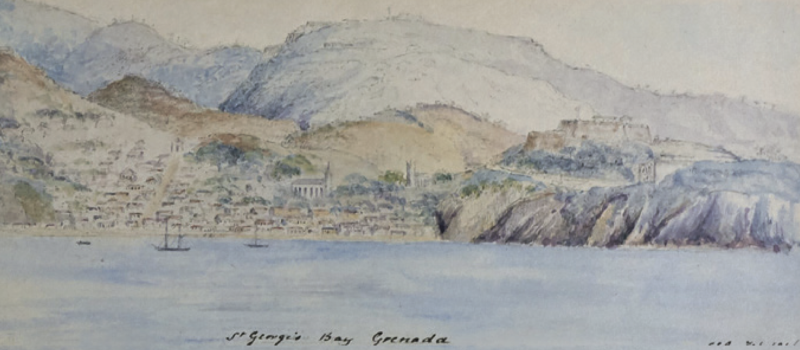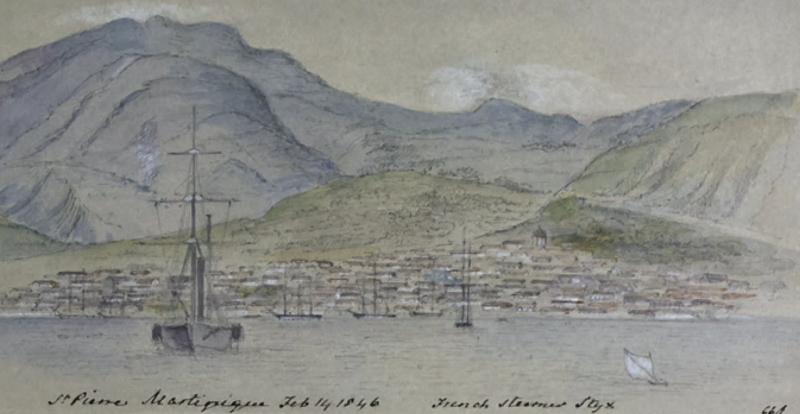Professor Kathryn Sutherland, Jane Austen’s House Patron and Acquisitions Advisor, writes: In June 2023, Jane Austen’s House acquired a manuscript book containing a laudatory biography of Jane Austen’s fifth brother Admiral Sir Francis Austen (1774-1865), and an album of watercolours and drawings by Francis and his daughter Cassandra (1814-49).
The biography (dated c.1863) is written in the third person but is likely Francis Austen’s own account, describing his life and family relations as well as observations on historical events within his knowledge and impressions of the countries he visited. The album contains 73 topographical watercolours and drawings, mainly of the West Indies and Canada, made by Francis Austen and his daughter Cassandra Eliza Austen in the 1840s.
These objects are significant additions to the Jane Austen House collection, offering new insights into Jane Austen and her family and new avenues for research. In part this is a family story. An understanding of Francis’s life and objects associated with him are vital to the stories of Jane Austen herself and her house. Of all Jane Austen’s brothers, Francis (known in the family as Frank) is the most intimately connected with the domestic lives of the Austen women. They shared a home with Frank and his wife in Southampton from 1806, and from 1809 - 1817 his growing family of children regularly visited or lived near to the Austen women, either at Chawton House or in Alton. In 1828 Frank married as his second wife Martha Lloyd, one of Jane’s closest friends who had long been part of the Austen female household at Chawton Cottage.
Professionally, Francis Austen’s life is of great importance to Jane Austen’s world view and to her writings. Frank had a long and distinguished naval career, rising to Admiral of the Fleet and becoming a Knight Commander of the Order of the Bath. He served against the French Revolutionary and Napoleonic sea forces and was one of Nelson’s commanders at Trafalgar. He travelled the world from the North Atlantic and West Indies to India and China. A keen abolitionist, after the cruelty he witnessed in the West Indies, he was also employed on missions by the East India Company. His life illuminates an interesting and increasingly examined period in British history: when abolition of the trade in slaves intersected with the rise of the British Empire. His domesticity and skilled craftsmanship have long been seen (including by Francis himself) as the original for the characterisation of Captain Harville in Austen’s last published novel, Persuasion. Domestically, and nearer to home, his lifelong intimacy with his sister Jane, and the fictional use she made of it, makes his story a vital part of hers.
Jane Austen’s cultural reach is global. Her story is both domestic and international. The house where she lived and wrote attracts large numbers of visitors from across the world (in person and online). A greater understanding of Frank’s story – a complicated one of an abolitionist deeply invested in imperial expansion – will help us to explore in pertinent detail the Austen family’s place within the wider narrative of Britain’s trade and foreign policy in the 19th century.
We are delighted that this timely acquisition allowed us to display both objects in 2024, the 250th anniversary of Francis Austen’s birth, as part of an exhibition telling his extraordinary story and its relationship to Austen’s novels—a story that is both international and precisely local. Alongside exhibition of both items, we will digitise the manuscripts and invite our audiences across the world to help us in producing a transcription of the biography, which will in turn be published online, enabling further research.


